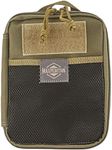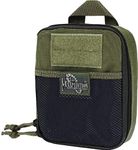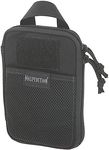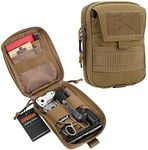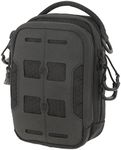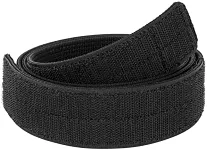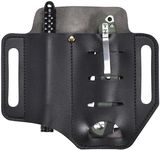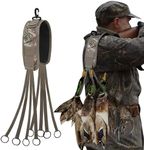Buying Guide for the Best EDC Pouches
Choosing the right EDC (Everyday Carry) pouch is essential for organizing and protecting your daily essentials. Whether you're carrying tools, gadgets, or personal items, the right pouch can make a significant difference in convenience and accessibility. Here are some key specifications to consider when selecting an EDC pouch to ensure it meets your needs and preferences.SizeSize refers to the dimensions of the pouch and determines how much it can hold. It's important because it affects portability and the amount of gear you can carry. Small pouches are great for minimalists who only need to carry a few items like keys, a wallet, and a phone. Medium-sized pouches can accommodate additional items like a multi-tool, flashlight, and notebook. Large pouches are suitable for those who need to carry more extensive gear, such as first aid supplies or larger tools. Choose a size based on the amount and type of items you need to carry daily.
MaterialMaterial refers to what the pouch is made of, and it impacts durability, weight, and weather resistance. Common materials include nylon, polyester, and leather. Nylon and polyester are lightweight, durable, and often water-resistant, making them ideal for outdoor use. Leather offers a classic look and is very durable but can be heavier and less resistant to water. Consider where and how you will use the pouch to determine the best material for your needs.
CompartmentsCompartments refer to the number and type of pockets and sections within the pouch. This is important for organization and accessibility. Pouches with multiple compartments allow you to separate and organize your items, making it easier to find what you need quickly. If you carry a variety of items, look for pouches with different-sized compartments, mesh pockets, and elastic loops. If you only carry a few items, a simpler design with fewer compartments may be sufficient.
Closure TypeClosure type refers to how the pouch is secured, such as zippers, Velcro, snaps, or buckles. This affects ease of access and security. Zippers provide secure closure and are easy to open and close, but can be prone to jamming. Velcro is quick and convenient but may wear out over time. Snaps and buckles offer a secure closure and are durable but can be slower to open. Choose a closure type based on your preference for security and ease of access.
Attachment OptionsAttachment options refer to how the pouch can be carried or attached to other gear, such as belt loops, MOLLE webbing, or carabiner clips. This is important for portability and versatility. Belt loops allow you to wear the pouch on your waist, keeping it easily accessible. MOLLE webbing is great for attaching the pouch to backpacks or other gear, providing flexibility in how you carry it. Carabiner clips offer a quick way to attach the pouch to various items. Consider how you prefer to carry your pouch and choose attachment options that suit your lifestyle.
WeightWeight refers to how heavy the pouch is when empty. This is important for comfort and portability. Lightweight pouches are easier to carry and less cumbersome, making them ideal for everyday use. Heavier pouches may offer more durability and protection but can be more tiring to carry over long periods. Consider how much weight you are comfortable carrying daily and choose a pouch that balances durability with a manageable weight.
